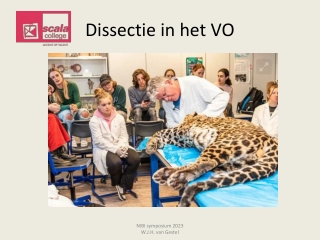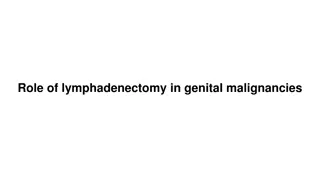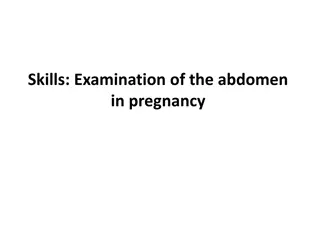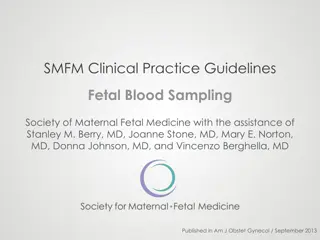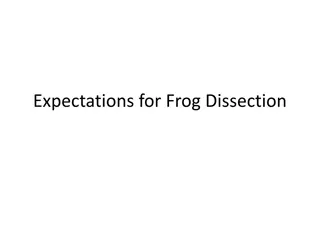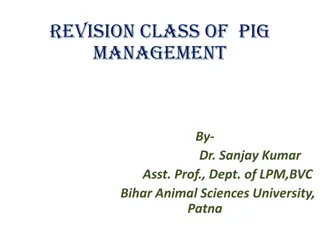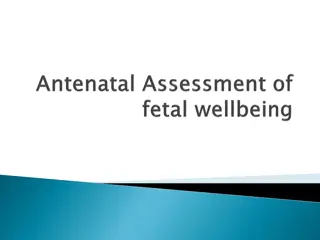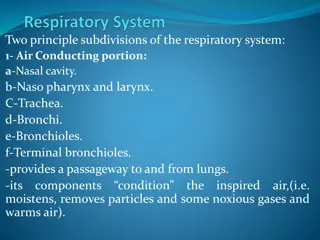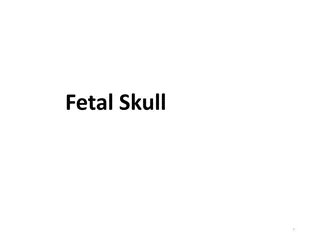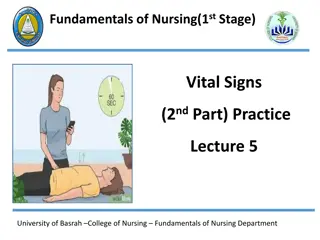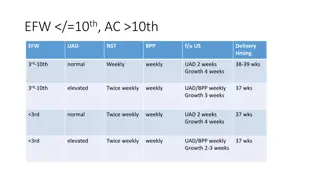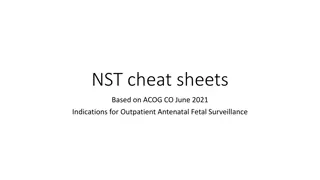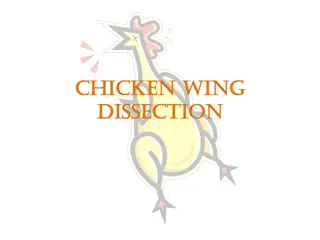Fetal Pig Dissection Lab: Observing External Features and Respiratory System
In this detailed lab report on fetal pig dissection, students are tasked with observing the external features of the pig, determining its gender, examining teeth and skin, and studying the importance of the umbilical cord. The lab also delves into the respiratory system, focusing on cartilage rings, the epiglottis, thoracic and abdominal cavities, organs like the lungs and diaphragm, and the process of breathing. Detailed diagrams aid in the exploration of these anatomical structures.
Download Presentation

Please find below an Image/Link to download the presentation.
The content on the website is provided AS IS for your information and personal use only. It may not be sold, licensed, or shared on other websites without obtaining consent from the author.If you encounter any issues during the download, it is possible that the publisher has removed the file from their server.
You are allowed to download the files provided on this website for personal or commercial use, subject to the condition that they are used lawfully. All files are the property of their respective owners.
The content on the website is provided AS IS for your information and personal use only. It may not be sold, licensed, or shared on other websites without obtaining consent from the author.
E N D
Presentation Transcript
Fetal Pig Lab Student Response Slide Show Group Members
Part A Responsibility Reader: Recorder: Dissector(s):
Part A: Observing the External Features of the Fetal Pig 1. The fetal pig assigned to you measures _____ cm in length. It seems to be approximately _____ days old. 2. Labe l the following diagram according to the directions
Part A: Observing the External Features of the Fetal Pig 3. Is your pig male or female? 4. How do you know?
Part A: Observing the External Features of the Fetal Pig 5. Does the fetal pig have teeth? 6. Are humans born with teeth? 7. Examine the skin of the pig. Is hair present? If so, what is the use of hair in mammals? 8. What is the importance of the umbilical cord? Is it the same in humans? 9. What other external observations can you make?
Part A: Observing the External Features of the Fetal Pig Label:
Part B Responsibility Reader: Recorder: Dissector(s):
Part B: The respiratory system What is the function of the cartilage rings? What is the function of the epiglottis? Label the diagram
Part B: Picture 1: The Respiratory System Esophagus Diaphragm Left Lung Larynx Trachea Right Lung
Part B: The respiratory system What structure separates the thoracic cavity from the abdominal cavity? What two important organs are located in the thoracic cavity? What happens to the pressure in your thoracic cavity as the diaphragm expands and then contracts? Explain what happens to the air and the lungs specifically.
Part C Responsibility Reader: Recorder: Dissector(s):
Part C: The Cardiovascular System Why would the ductus arteriosus be important for the fetal pig but not a baby (having been born) pig? In what ways do the atria and ventricles differ? Explain how the blood flows from the heart to the body and back again.
Part C: The Cardiovascular System Label the areas of the heart
Part C: Picture 2: The Heart Right Ventricle Aorta Left Atria Pulmonary Trunk Right Atria Vena Cava Left Ventricle
Part D Responsibility Reader: Recorder: Dissector(s):
Part D: The Digestive System What System does the diaphragm belong to? How many lobes does the liver have in the pig?
Part D: The Digestive System Label the Diagram of the Human Digestive System
Part D: Picture 3: The Digestive System Liver Small Intestine Diaphragm Stomach Large Intestine Gall Bladder
Part E Responsibility Reader: Recorder: Dissector(s):
Part E: The Nervous System What are the ridges in the brain called? What are the grooves called? What is the function of the cerebellum? What is the function of the cerebrum?
Part E: Picture 4: The Brain Cerebrum Cerebellum Spinal Cord Longitudinal fissure
Individual Component In a separate file please respond to the following question. You may choose to discuss any organ that we have discussed this semester, use any resources you need to (except for other students in class, this is an individual assignment). QUESTION: Describe in detail how the structure of a particular organ that we have discussed this semester meets the function of that organ in the body. Please make sure that you address both the gross anatomy of that organ as well as the microscopic anatomy of that organ. Your essay should be NO MORE than one page in length double-spaced. Your essay will be graded on content (90% and mechanics 10%)
Essay Rubric Fetal Pig Dissection Essay Rubric. ___/3 Essay has proper mechanics. ___/2 Writing is clear and concise, all information included helps to support the thesis. ___/5 Essay clearly describes in detail gross anatomical features of the organ and makes a direct connection between the features and the function of the organ. ___/5 Essay clearly describes in detail microscopic (tissue level or below) features of the organ and makes a direction connections between that feature and the function of the organ. ___/2 Statements are supported by evidence. ___/3 Essay displays an appropriate depth of understanding of the organ in question and its role in the body.
Grading Break Down Group Component: 75 points PowerPoint Content (65 points) Photographs Labeling Short answer and fill-ins Group Work and Practical Questions(10 points) Responsibility was shared and noted in the PowerPoint, each member of the group tried each role at least 1 time Group used materials respectfully and cleaned up after each class Group members were able to answer on the spot questions successfully Individual Component: 25 points Essay (20 points) Attendance and quality of participation (5 points) TOTAL POINTS ENTERED: 100 points


